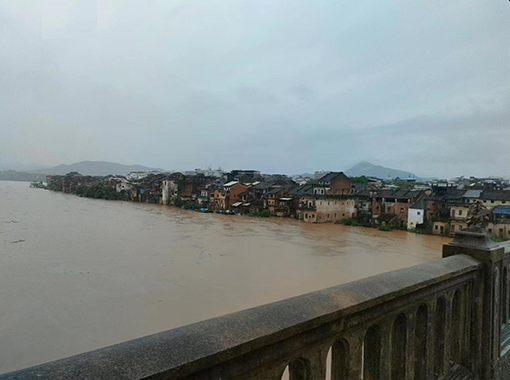Flood disasters are generally prevalent in southern cities in summer, and the field of hydrological monitoring has attracted more attention. The application of radar level sensors in hydrological monitoring has also become more and more important. Let's take a look at the selection points and construction plans of level sensors in this regard.
1. Hydrological monitoring stations are usually located in the wild, far away from residential areas, so there is no power supply on site. Therefore, the power supply test for radar level transmitters is very strict, so only battery-powered products can be selected. In order to monitor water level data uninterruptedly for a long time, solar panels are used to extend the battery life.
2. In order to prevent excessive changes in water level at monitoring points from affecting the measurement range and even damaging the instrument, products with larger ranges are selected. Then, a steel frame platform is installed at the monitoring points, and the radar level sensor host, battery, and solar panel equipment are installed on the platform.
3. In order to enable the hydrological monitoring station to obtain the measured hydrological data in time and reduce the workload of staff to read meters on site, and because on-site personnel may not be able to get close to the radar level sensor when a flood occurs, a GPRS module is installed to automatically upload the measured data to the hydrological monitoring station wirelessly.
4. Development of upper computer software, the radar level sensor can connect data to the existing management system of the hydrological monitoring station through corresponding modules, or develop system monitoring software separately.
By transmitting and receiving radar waves to accurately measure the liquid level height, it can monitor the changes in water level at all times, providing important technical support for our hydrological data collection and analysis.
The water level changes in rivers and lakes affect all aspects of our lives. From flood control to water resources management to ecological protection, each link is inseparable from the accurate monitoring of water levels. The hydrological radar level meter is the core tool for this series of work. It can monitor the water level changes of rivers and lakes in real time and accurately, help managers understand the water level conditions in a timely manner, and provide data support for decision-making. As an important part of water conservancy projects, the water level monitoring of reservoirs is crucial for the dispatching and operation management of reservoirs. 
The hydrological radar level transmitter is like an all-around water monitor. Whether it is a river, lake, reservoir, or various water treatment facilities, it can accurately monitor liquid level, providing great convenience for our hydrological monitoring work. With the continuous advancement and innovation of technology, we have reason to believe that it will play a greater role and bring more convenience and safety to our lives.
In the world of industrial measurement technology, accuracy and reliability are crucial. As an advanced measurement tool, high-frequency radar level sensor has become an indispensable device in the liquid storage and processing process of many industries with its unique design, high accuracy and wide range of applications. When looking for high-precision and high-reliability level measurement solutions, our independently developed 80GHz millimeter-wave radar level transmitter has attracted much attention due to following advantages:
1. High-precision measurement: The high-frequency radar level sensor of SKE can provide millimeter-level measurement accuracy, which is critical for many industrial processes that require precise control.
2. Strong adaptability: Due to its non-contact measurement method, the high-frequency radar level sensor can adapt to a variety of media, including corrosive liquids, high-viscosity liquids, toxic or high-temperature liquids, etc.
3. Easy to install and maintain: The split design makes installation and maintenance easier without opening the container or stopping the production process.
Accurate and timely flood measurement and reporting can maximize the performance of the radar level transmitter and provide reliable data support for monitoring and management in the field of hydrology.

 CN
CN


